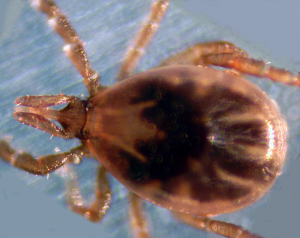 Although Lyme Disease is not yet a problem in cats, pet owners should nevertheless be on the alert. In one veterinary practice it was reported that, compared to hundreds of dogs diagnosed with Lyme Disease, only about fifteen cats were found to be affected. An interesting phenomenon of the disease transmission process may offer the explanation, and that is that the infecting bacteria do not pass into the bloodstream of the host until up to 24 hours after attachment of the tick. Cats generally are rather fastidious self-groomers, and thus may detect and remove a tick before this amount of time has elapsed. However, this does not address recent reports that Lyme Disease is also spread by mosquitoes and certain biting flies as well. I think we can expect to see more of this disease in cats.
Although Lyme Disease is not yet a problem in cats, pet owners should nevertheless be on the alert. In one veterinary practice it was reported that, compared to hundreds of dogs diagnosed with Lyme Disease, only about fifteen cats were found to be affected. An interesting phenomenon of the disease transmission process may offer the explanation, and that is that the infecting bacteria do not pass into the bloodstream of the host until up to 24 hours after attachment of the tick. Cats generally are rather fastidious self-groomers, and thus may detect and remove a tick before this amount of time has elapsed. However, this does not address recent reports that Lyme Disease is also spread by mosquitoes and certain biting flies as well. I think we can expect to see more of this disease in cats.
So, what is Lyme Disease? It is an infection caused by the borrelia burgdorferi. Early symptoms can occur within a month of infection and frequently appear as fever, loss of appetite and lameness. Interestingly enough, not all dogs with a positive blood test have the disease and not all dogs with a negative blood test do not have the disease! Therefore three things are involved in making the diagnosis: signs and symptoms, blood tests, and the interpretation of a skilled clinician.
Once the diagnosis is made, be it certain or presumptive, early treatment with antibiotics is usually effective. Fortunately for our canine friends, we have a vaccine for Lyme Disease which over the last few years has proven to offer excellent protection when properly administered.
Let me say just a few words about protecting ourselves. Be aware that April through October are the months when infection is most likely. When walking in wooded areas, stay in the middle of the path. Be sure to tuck pants into socks, wear light colored clothing and long-sleeved shirts.
Lyme Disease is here to stay, but by being aware we certainly have a good start on its prevention and control.



